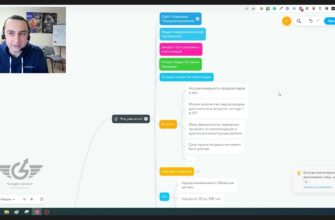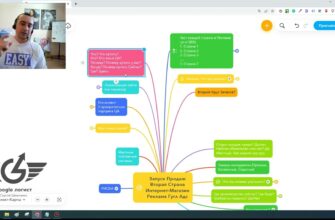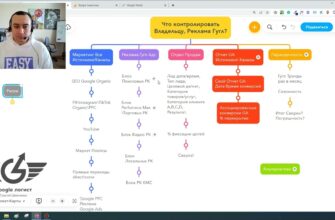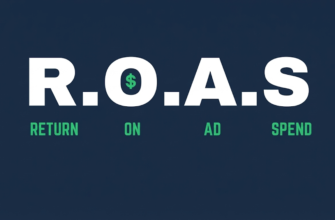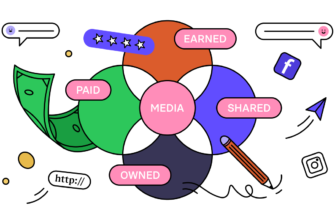- What is click fraud in contextual advertising?
- Who is usually engaged in click fraud?
- What is the danger of scrolling budget in contextual advertising?
- How can you detect ad budget squibbling?
- How does Google Ads fight click fraud?
- How else can I protect myself from contextual advertising scrolling?
- Why shouldn’t you try to click a competitor’s ad campaign?
Contextual ad clicks are a phenomenon that comes as an unpleasant surprise to anyone who competes fairly in the market and pays for ads in Google Ads. By the forces of unscrupulous participants, up to half of your advertising budget can fly down the drain.
Those who believe that all means are good in war, do it themselves or pay for bots that do all the dirty work. Instead of improving their product and coming up with interesting promotions, some competitors find it easier to find a “black” scrolling service. There are not so many such requests, but they are there.
What is click fraud in contextual advertising?
The very concept of “Click fraud”, which translates as “scrolling” means repeated clicks on the links specified in contextual advertising, with the sole purpose of unproductive waste of advertiser’s funds allocated for the promotion of any product.
How many calls and sales will I get by ordering contextual advertising from you?
I need to calculate the conversion of my website Describe
the task
in the application
Calculate potential ad revenue Google
contextual advertising calculator
Information! Clicking can take place both in manual and automated mode. The first low-efficiency method does not significantly harm the advertiser. But the second, when a clicker bot comes into play, can cause tangible harm.
The principle of action of such bots is to imitate the behavior of “live” users. With the help of special software, a short-term visit to the necessary web resource is emulated. As a result, the advertiser’s account can be charged substantial amounts, which are spent uselessly for him, because such clicks on ads can not be called targeted.
Who is usually engaged in click fraud?
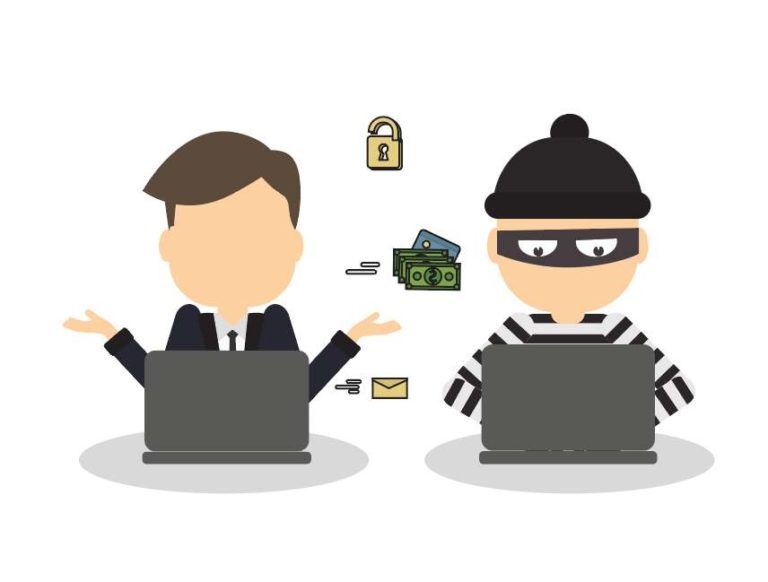
Those who engage in click fraud in contextual advertising usually belong to one of four groups:
- Competitors. Most advertisers set a limit on the amount of money they are willing to spend on contextual ads per day. The goal of unscrupulous competitors is to use special software to squeeze this advertising budget as soon as possible in order to reduce competition in the issue and thus increase the likelihood of attracting a customer to the site of their organization;
- Website owners who make money from advertising. The contextual media network is used to display Google’s graphical ads on the web resources of its members. The owners of such resources can earn up to half of the cost of a click paid by the advertiser. To increase earnings from advertising, site owners can click on the links in the ads themselves or with the use of special software;
- Professional clickers. Most often in the positions of such low-paid hired workers are teenagers. They skim the budget of advertisers, receiving rewards from their competitors-customers;
- Users who have fun scrolling. For this group of people, who do not get any benefit from their actions, contextual advertising scrolling has a purely entertaining nature.
What is the danger of scrolling budget in contextual advertising?
- Direct loss of advertising investments. The most serious consequences of budget slippage in contextual advertising are a noticeable increase in the average cost of an order. For some advertisers, the loss of advertising funds is so significant that they are forced to look for a replacement for this channel of attracting traffic to the site. This becomes the cause of the second problem;
- Slowdown of business development. In some areas of activity, it is simply impossible to refuse contextual ads. This, for example, applies to urgent opening of locks, calling a tow truck or a lawyer. The site located on the first place of the output, with a high probability of collecting almost all orders in these areas of business. Other areas are also sensitive to a decrease in traffic from Google contextual advertising, which is always reflected in sales volumes;
- Distortion of statistical data. The task of calculating the actual cost of a lead, the source of which was contextual advertising, becomes insoluble in the case of scrolling. Business owners find it difficult to assess its profitability. That’s why you need to take care of effective click fraud protection when promoting your product in Google Ads.
How can you detect ad budget squibbling?
An organization whose ads are the target of click attacks can lose hundreds of dollars a day. But timely detection of the threat and its elimination can save the company from dire consequences.
Signs of a problem:
- A noticeable spike in traffic. Analytical reports show strange clickability indicators: an increased number of clicks by visitors who almost immediately left the resource without taking any action (buying a product, sending an online request, adding a product to the cart, etc.). Such ineffective traffic usually have pages with high-frequency search phrases;
- A large number of visits from the same address. This symptom often indicates that scrolling is performed unprofessionally. But it is also worth paying attention to. This is first of all a signal that someone who does not know click fraud methods is trying to spend your advertising budget. The ways to combat such profane will be described in the article below.
- Large values of the bounce rate. The concept of “bounce” in Internet marketing implies the rapid termination of a user’s visit to the site. Such visitors come in and, without studying the information on the page, immediately leave. If the analytical system records a high bounce rate, it is worth thinking about whether it is not scrolling;
- Lack of information about the Cookie session. The cookie mechanism allows you to use a piece of program code to mark the device used by the user visiting the site. Initially, all web browsers have the ability to set such a mark. This setting is rarely changed intentionally. Consequently, if there are many visitors to your resource who do not have cookies registered, then with a high degree of certainty we can talk about fraudulent actions aimed at skimming the advertising budget.
How does Google Ads fight click fraud?

How many calls and sales will I get by ordering contextual advertising from you?
I need to calculate the conversion of my website Describe
the task
in the application
Calculate potential ad revenue Google
contextual advertising calculator
Before we move on to the question of how to fight Google Ads contextual advertising scrolling on your own, we should focus on the click fraud detection system developed by Google. The company’s own center analyzes the quality of traffic and assists in reimbursing those clients who have suffered from the unscrupulous actions of competitors and other fraudsters.
The service records and analyzes all transitions for all ads in both CMMS and search. If the user’s actions correspond to fraudulent ones, the system automatically credits the advertiser’s account for the funds spent as a result of these actions.
Information! This feature of Google is simply invaluable for advertisers – not only is there constant analysis of user behavior for click fraud, but also automatic recovery of the advertising budget spent on it.
The AdWords system considers actions that are not trustworthy to be:
- Clicks that have no practical value to the advertiser (e.g., double-clicks);
- Manual clicks, the purpose of which is to increase the advertiser’s budget;
- Manual clicks, the purpose of which is to increase the income of the owner of the advertising platform;
- Clicks made by bots in automated mode;
- Actions aimed at artificially lowering the CTR of an advertising campaign or ad.
Click fraud is detected and filtered at the stage before analytical reports are generated. In the process of analysis, the system processes several data sets – duplicate clicks, IP address, duration of execution, etc.
How else can I protect myself from contextual advertising scrolling?
To protect against contextual advertising scrolling, there are additional ways to minimize damage from fraudulent actions:
- Utilizing low-frequency keyword phrases. Narrowly specialized formulations are usually used only by target visitors, they are rarely found among the audience not involved in the topic;
- Properly designed ads. Call to action ads always work more effectively than unoptimized ads at the top of the list. Real customers will pay attention to properly written informative advertising text, while unscrupulous users usually target the top ads;
- Geotargeting. Use this tool to show ads only in the regions where you really work. It is not only pointless, but also harmful to increase the area of display. This allows fraudsters to skim the budget from proxy servers located in other cities. For geotargeting in Google, you can use the function of blocking the display of ads on devices whose addresses do not belong to the specified range;
- Control ad spend. By setting a daily spending limit, you can estimate how quickly the money runs out. Once the limit is reached, the ad display will stop. And if it happens earlier than usual, it’s worth analyzing for scrolling;
- Flexible display schedule. Unpredictable stops in the advertising campaign can confuse scammers;
- Compiling a list of reliable sites. Pay attention to the reputation of the resources you use as advertising platforms. Unscrupulous owners of some of them may pursue the goal of generating income at any cost. Work only with trusted sources. This way, the probability of click fraud will be minimal.
Why shouldn’t you try to click a competitor’s ad campaign?
Clicking a competitor’s contextual advertisement is a kind of crime in the virtual environment.
Such a radical and impure tool of competition, such as scrolling, is completely unjustified – highly effective protection systems of most contextual advertising services are well able to cope with the problem of click fraud.
If you still plan to try this method of competition, remember:
- It is quite possible to drain your competitor’s advertising funds if you ensure that clicks on ads are identified by the system not as bots, but as “live” users. But it should be remembered that the clickability rate of the attacked ad may increase due to an increase in the total number of clicks to the site;
- An increase in CTR will reduce the cost of subsequent clicks. Paying for a click-attack on a competitor will not achieve a long-term effect. In the process of lowering the price of a click, you will need more and more conversions, and therefore more money to pay bots. As a result, both time and money will be wasted;
- A more reasonable alternative to scrolling competitors while reducing their promotion costs is your own advertising campaign, which will help you attract customers for your product.
Important! To protect yourself from the actions of unscrupulous competitors, you should always pay attention to any non-standard situations and scrupulously analyze your own analytical reports, and at the first suspicions contact the support service.





